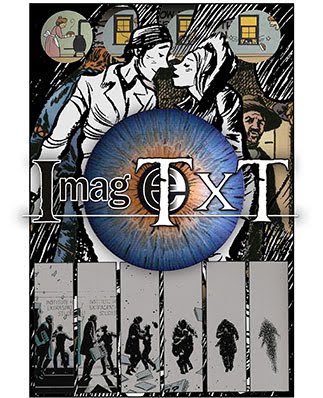So today was the day for Alan Moore scholars, apparently...CFP:
ImageTexT
Alan Moore and Adaptation
ImageTexT is pleased to announce an upcoming special issue on the work of
Alan Moore and adaptation. Throughout his career, Moore has displayed a willingness to adapt and appropriate the plots, characters, settings, and themes from traditional narratives and the works of other authors into his own writing. Additionally, Moore's work itself continues to be the focus of adaptation, typically in the form of big-budget Hollywood films. We are seeking articles that deal with the work of Alan Moore and adaptation in any and every sense, whether that means analyzing the transitions of comics like
Watchmen and
V for Vendetta into film or analyzing the incorporation of folk tale and literature elements in works like
Lost Girls and
The League of Extraordinary Gentlemen.
Possible topics may include but are not limited to:
- Problems in adaptation and appropriation of existing characters and elements
- Formal analysis of comics as the medium for adaptation
- Issues concerning film adaptations where the author is not involved (which Moore rarely is)
- Concern with (or disdain for) historical fidelity when dealing with stories from a specific era
- Moore’s collaborations with various artists and their effect on adaptation
- Characters and narratives supposedly reserved for children which are adapted into explicitly adult stories
As
ImageTexT is concerned with the formal study of image/text relations, we are most interested in submissions that give significant attention to how images function in relationship to text. We strongly prefer to receive submissions that make reference to specific images and include high-resolution artwork along with text. Throughout his career, Moore’s work has been resolutely bold and we encourage prospective contributors to be similarly daring with their ideas and analysis.
All submissions for this special issue are due April 1st, 2010. Send all submissions to
Rex Krueger at
rkrueger@ufl.edu and CC them to
Katherine Shaeffer at
KHShaeffer@gmail.com.
Submissions will be peer-reviewed and returned by June 1, 2010.
This issue is slated for publication in the Spring of 2011.
ImageTexT is a web-based journal published by the University of Florida, committed to advancing the academic study of comic books, comic strips, and animated cartoons. Under the guidance of an editorial board of scholars from a variety of disciplines,
ImageTexT publishes solicited and peer-reviewed papers that investigate the material, historical, theoretical, and cultural implications of visual textuality.
ImageTexT welcomes essays emphasizing (but not limited to) the aesthetics, cognition, production, reception, distribution and dissemination of comics and other media as they relate to comics, along with translations of previously existing research on comics as dimensions of visual culture.
Labels: A Moore, academic, cfps, ImageTexT
 The new issue of ImageText, the journal about comics from the University of Florida, was just published. Here's the homepage for this issue. Contents include:
The new issue of ImageText, the journal about comics from the University of Florida, was just published. Here's the homepage for this issue. Contents include: The new issue of ImageText, the journal about comics from the University of Florida, was just published. Here's the homepage for this issue. Contents include:
The new issue of ImageText, the journal about comics from the University of Florida, was just published. Here's the homepage for this issue. Contents include: